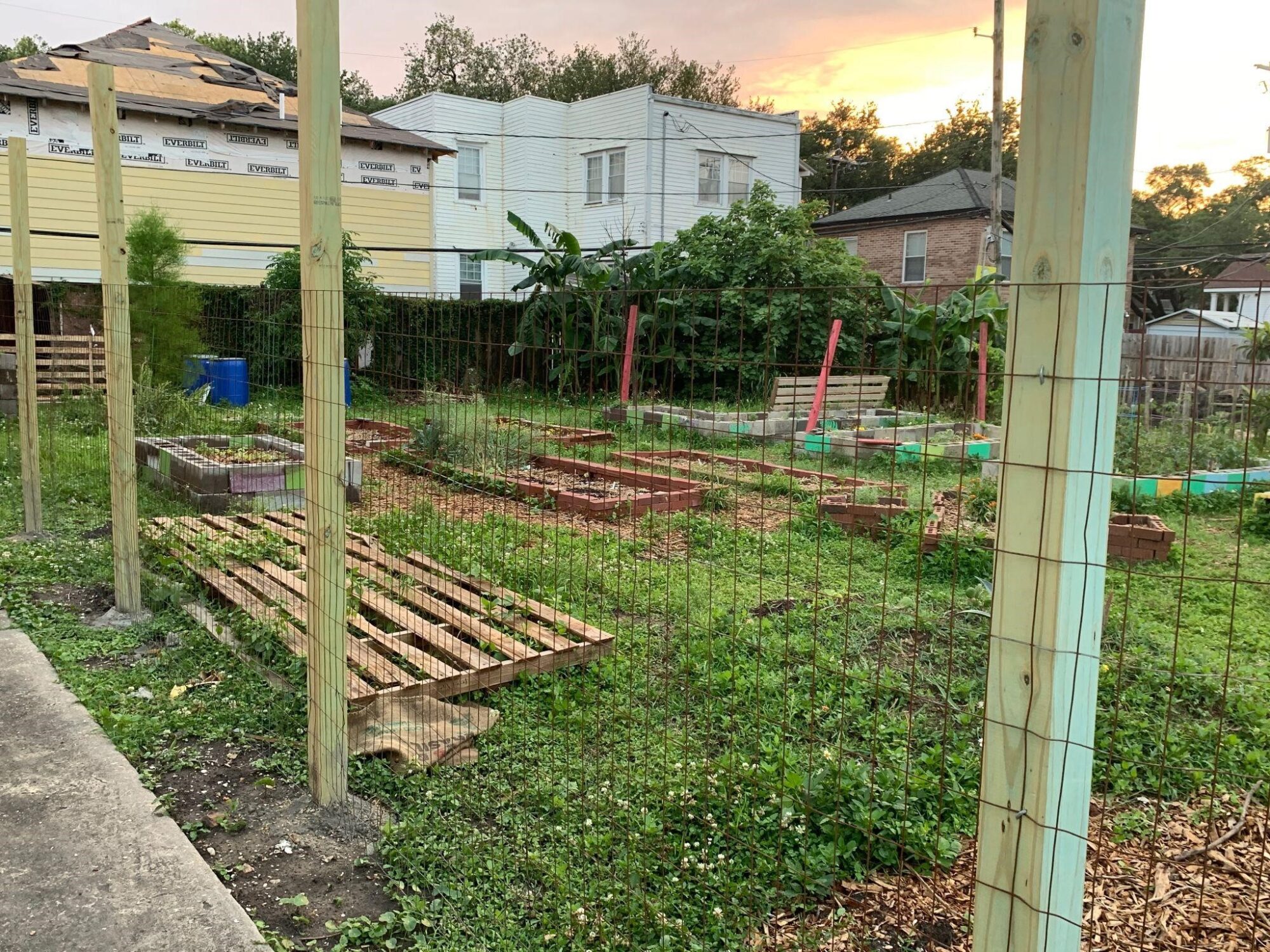Changemaker Catalyst Award Recipient, Sara Good-Chanmugam volunteers with a New Orleans Community Garden, the Broadmoor Food Forest, which grows produce to distribute amongst volunteers, community members, and the Broadmoor Food Pantry. While only occupying one lot, the plants produce a substantial amount of food. The garden displays the potential of urban farming operations and the radiating impacts growing food has on our understanding of the intersection between food, ecology, economy, and community. Sara graduated from Tulane in May 2021 with a double major in Environmental Biology and Economics and now works at Xavier University of Louisiana as the Assistant Director of Sustainability.
I first arrived in the garden in January 2021, as part of a class titled Urban Agroecology, taught by the incredible professor Dorothy Cheriuyot. The goal of the class was to further our knowledge of foundational ecological principles and the biology and interaction of plants using sustainable food production in an urban setting. The class also focused on the roles of urban agriculture in community building and creating non-monetary economic systems. Our group’s garden is located on Toledano St, a road that has seen its fair share of local food production, but had seen cycles of investment and divestment. Although overgrown and obscured by construction equipment, the Food Forest had an undeniable magic. Tucked in the corners, huge banana and fig trees, which had watched the rises and falls of the lot, loomed overhead, and four long beds supported a healthy grouping of kale, broccoli, and cauliflower.
We were all covered in hitchhikers, little seeds with sharp talons for dispersal, and the mosquitoes had begun to swarm, but it was unbelievably happy. I had no idea, at the time, the enormous impact this class and our garden, the Broadmoor Food Forest, would have on my life, career, and garden community.

Broadmoor Food Forest- Sometime in January
The work was hard. Lots of discussing, planning, connecting, and weeding. A little bit of arguing, frustration, dehydration. Mostly, it was inspiring seeing how quickly a space could be transformed; how different plants looked after a little bit of TLC; how many incredible people came together to work on plants.
We had our work cut out for us.
Constructed raised beds.
Part of the challenge with our garden was getting people to feel invited into the space. We envisioned community gatherings with live music, kids playing under the fig trees, friends coming to weed together.
But our garden was kinda of intimidating. She was tough, standing on a heavily trafficked road which always had construction. There were some old signs hidden by banana fronds, but not much else indicating the presence of such immense life.
Remainders of the old fence around the property are visible. It used to be decorated with welcoming signs and information. The poles we’re painted bright red to attract the attention of passersby. It was all handmade by a group of loving volunteers, who, outside of a few facebook messages, I don’t know. Having a fence seemed integral to the creation of a relaxing and although counterintuitive, inviting garden space. We could display welcome information and grow nice smelling flowers on the fence which would also help keep trash out.
I applied for the Taylor Center Grant and was awarded money to complete the installation and construction of a perimeter fence and signage. The next couple weeks of planning were surprisingly easy, thanks to the guidance of John, the contractor and Tulane’s easy to understand award process.
There were some obstacles, like a national lumber shortage that significantly increased the price of wood and the discovery of some concrete foundations we had to break through.
Luckily, we had a crew of amazing volunteers that worked hard to complete the project. In the process, we learned to mix concrete, use a sledge hammer, and staple fence posts.
The completion of the fence marked a new error for our garden. We got to work on the signs which complemented the wire fence nicely as well as planted some vines to decorate the outside. We specifically designed the fence to remain open, as the garden must remain inclusive and accessible, however, now, the garden feels much more like an oasis, an entrance that connects you to the city, but also transports you to a different world.
The garden has taught me more life lessons than I can count, but i will try by listing a few of the most special:
(1) Change happens quickly. There are natural cycles at work we can tap into slow and speed up the process.
(2) It’s all about trade offs; allocations of energy. What do you (or your plant) want to focus on?
(3) It’s also all about connections. Symbiosis in the garden, in the ecology of our community create healthy, resilient ecosystems with immense power
The garden is made up of millions of microcosms that, on any scale, can serve as a window into our own communities, offering a type of insight or guidance.
There will be lots more change to come; successes and failures, life and death;, and most of all, growth and connectivity. I envision a future filled with community gardens, made possible by the generous support of entities like Tulane, where once empty lots are filled with produce and growing and sharing food is commonplace.







